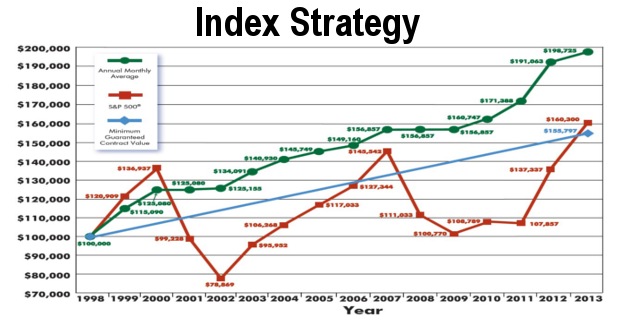Fixed Index Annuity [FIA] – Advantages & Disadvantages
There are no perfect investments or retirement strategies that solve every contingency. It is more likely that a combination of investment strategies and financial vehicles will ultimately give you the diversified retirement plan that you are looking for. A Fixed index annuity offers several advantages that may suggest a foundational position in your retirement planning; however, they to are not without their disadvantages.
As with all investments, there are pros and cons to be aware of and take into consideration. These characteristics for some individuals may be a true disadvantage, and for other individuals they may offer a needed advantage with no negative impact based on one’s retirement planning objectives.
Fixed Index Annuity Disadvantages:
- 10% IRS penalty on withdrawals prior to 59 1/2 years of age
- Early withdrawal penalties or surrender charges for large withdrawals prior to maturity or when withdrawing in excess of the 10% annual surrender-free portion
- Ordinary income tax owed on earnings during the withdrawal or income payout stage
- LIFO: Last in first out tax requirement so earnings are taxed first, unless annuitization takes place, which then uses a tax exclusion ratio
- Fixed index annuities are not FDIC insured
- Fixed index annuities do not capture the full upside of the stock market
- Caps, participation, spreads and declared fixed interest rates are all subject to change on an annual basis
- It is possible during a down year or years to have zero-interest crediting
- Safety: Backed by highly rated, state regulated insurance companies
- Tax Deferred Growth
- Participation in a portion of stock market gains with no risk of loss
- Higher Return: Better interest rates typically than CDs, money markets and bonds
- Life Insurance: Death payout guarantee options
- Liquidity: Flexible withdrawal privileges
- Unlimited Contributions, unlike IRAs and 401(k)s
- Inheritance: Pass money directly to heirs bypassing probate
- Lifetime Option: Income you can’t outlive annuitization or a Living Benefit Rider.
[FIA, Fixed Index Annuity]
- Lump-sum or periodic contributions
- Invested in mostly high quality A-AAA bonds
- Annual interest crediting risk. Insurance company guarantees principal.
- Higher rate potential based on index performance (such as S&P 500, Dow Jones, NASDAQ, etc.)
- Moderate growth
- 4% to 8% interest crediting potential; varies with index performance
- 3- to 14-year term
- Sophisticated, greater potential
- Guaranteed retirement income options
- Annual fees, minimal to none






















